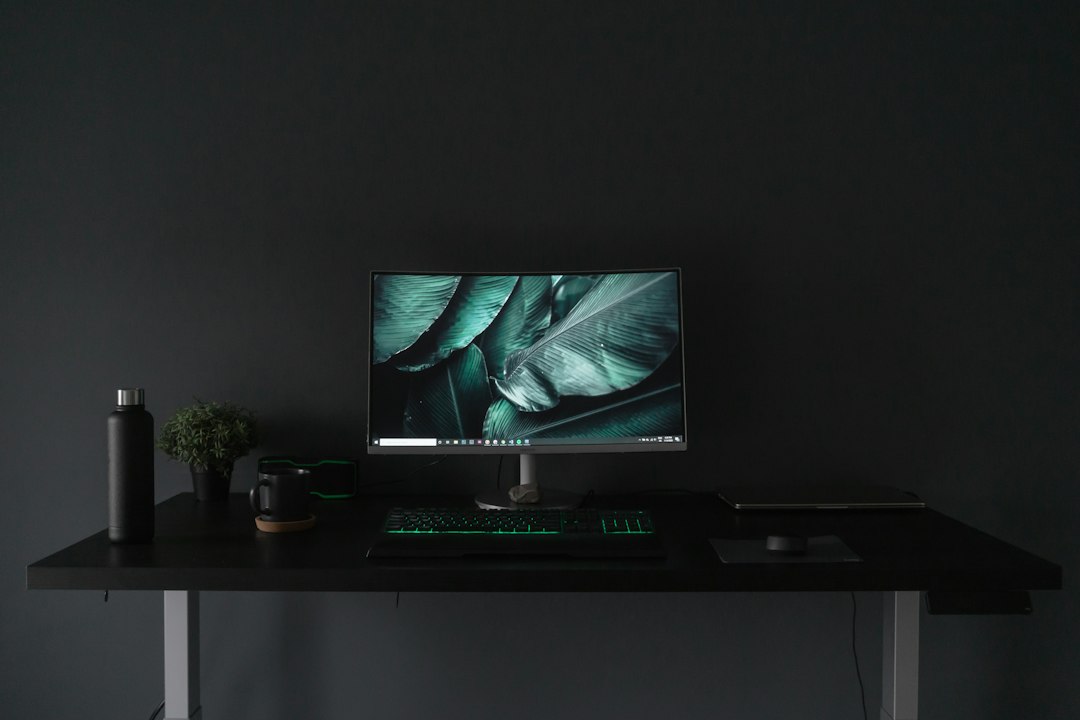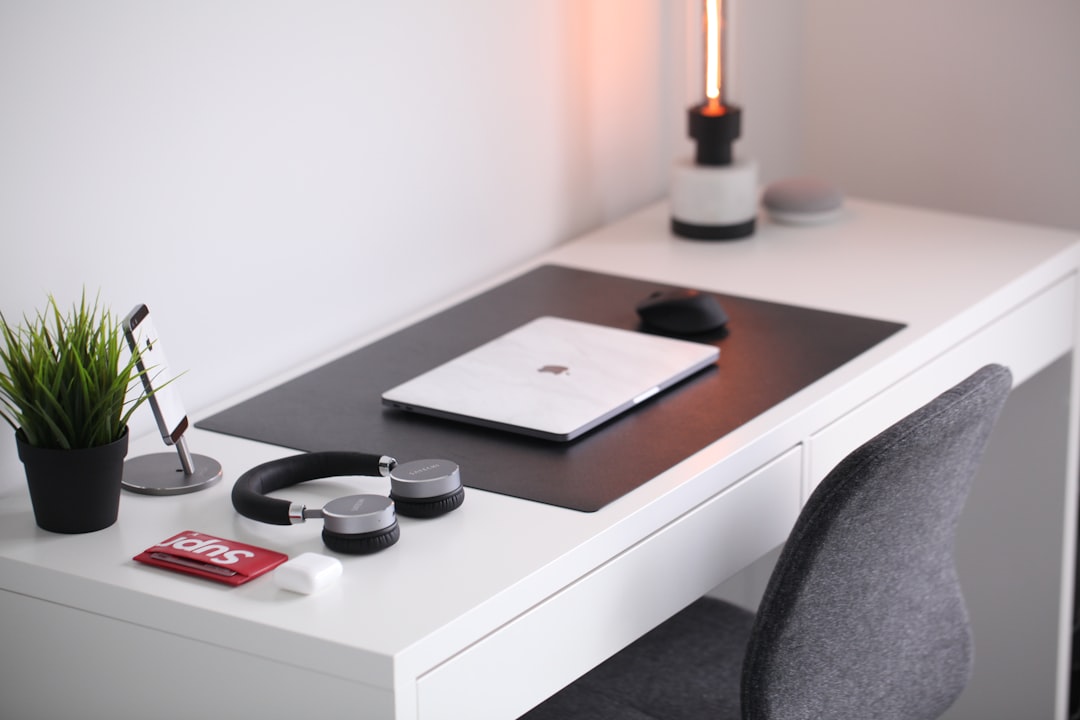In today’s fast-paced digital age, productivity has become an essential skill for success. With constant access to technology and an abundance of digital distractions, it can be challenging to stay focused and accomplish our goals. However, by mastering the art of productivity, we can not only become more efficient and effective in our work but also create a sense of accomplishment and satisfaction in our daily lives.
The digital age has revolutionized the way we work and live. We have become interconnected, always online, and bombarded with a constant flow of information. While these advancements have brought numerous benefits, such as increased connectivity and access to information, they have also introduced a plethora of distractions that can hinder our productivity.
Understanding the digital distractions that influence our productivity is the first step towards overcoming them. Common sources of distractions range from social media platforms, email notifications, and instant messaging to endless web surfing and even the temptation of binge-watching the latest TV series. The impact of these distractions can be significant, leading to decreased focus, disrupted workflow, and ultimately, reduced output.
To combat the negative effects of digital distractions, creating a designated digital workspace is crucial. Organizing your digital files and folders in a logical and structured manner not only saves time but also allows for seamless navigation and retrieval of information. Additionally, utilizing productivity tools and apps specifically designed to enhance your workflow can help streamline tasks, track progress, and increase efficiency.
Time management is another vital element in mastering productivity. By setting priorities and goals, we can allocate our time effectively and focus on tasks that contribute the most value. Implementing techniques such as time blocking, where specific time slots are dedicated to specific tasks, and the Pomodoro technique, which involves working in short bursts of intense focus followed by short breaks, can enhance productivity and prevent burnout.
Procrastination is a common obstacle that stands in the way of productivity. Understanding the root causes of procrastination, such as fear of failure, lack of motivation, or overwhelm, is crucial for overcoming it. By implementing practical strategies such as breaking tasks down into smaller, manageable steps, utilizing accountability systems, and adopting a mindset of discipline and perseverance, we can conquer procrastination and stay on track towards achieving our goals.
In a world filled with endless digital distractions, maintaining focus is an ongoing challenge. Practicing mindfulness and setting boundaries, both online and offline, can help us regain control of our attention and improve concentration. Additionally, limiting multitasking and managing notifications can prevent interruptions and allow us to work with greater focus and efficiency.
While productivity is essential, achieving a healthy work-life balance is equally vital for overall well-being. Prioritizing self-care, establishing clear boundaries between work and personal life, and incorporating strategies such as time for hobbies, exercise, and quality time with loved ones are essential for sustaining long-term productivity and personal fulfillment.
In conclusion, mastering productivity in the digital age requires determination, persistence, and a proactive approach. By understanding the distractions, creating an organized digital workspace, managing time effectively, overcoming procrastination, maintaining focus, and achieving work-life balance, we can not only excel in our professional endeavors but also lead fulfilling and meaningful lives. So let’s embark on this journey together and unlock our true potential in this digitally-driven world!
Understanding the Digital Distractions
In today’s digital age, distractions are ubiquitous and can significantly affect our productivity. It is crucial to recognize and understand these distractions so that we can effectively combat them and optimize our focus and efficiency.
Common sources of distractions in a digital environment include social media platforms, email notifications, instant messaging apps, and the constant influx of irrelevant information. These distractions can easily lure us away from important tasks and impede our progress.
However, the impact of digital distractions on productivity cannot be underestimated. Studies have shown that even brief interruptions can disrupt our train of thought and increase the time it takes to complete a task. Furthermore, constantly switching between different activities reduces our ability to concentrate and decreases our overall productivity levels.
Therefore, it becomes imperative to take proactive measures to minimize the negative effects of digital distractions and regain control over our work environment.
One strategy for countering digital distractions is to create a digital workspace that promotes focus and organization. This involves organizing digital files and folders to ensure easy access and retrieval of information. By having a well-structured system in place, we can avoid wasting time searching for files and stay on track with our tasks.
In addition to organizing our digital files, utilizing productivity tools and apps can greatly enhance our efficiency. There are numerous apps available that can help us manage our time, stay organized, and block out distractions. From task management apps to browser extensions that limit social media usage, these tools can provide the support needed to thrive in a digital work environment.
By understanding the common distractions we face and implementing strategies to combat them, we can regain control over our productivity and maximize our performance. The digital world may present endless distractions, but with determination and persistence, we can create a focused and efficient workspace that enables us to achieve our goals.
There are numerous apps available that can help us manage our time, stay organized, and block out distractions.
Creating a Digital Workspace
In order to truly harness the power of productivity in the digital age, it is crucial to create a digital workspace that is organized and optimized for efficient work. This means taking control of your digital files and folders, and utilizing the vast array of productivity tools and apps that are available to us.
First and foremost, organizing your digital files and folders is essential for finding important documents and resources quickly and easily. Just like a cluttered physical workspace can hinder productivity, a disorganized digital workspace can cause unnecessary stress and wasted time. Take the time to create folders for different projects or categories and be diligent about renaming files with clear and descriptive names. By implementing a systematic structure, you can ensure that everything is in its rightful place and readily accessible when you need it the most.
But organizing files is just the beginning. It’s time to tap into the power of the many productivity tools and apps that exist to help us streamline our work processes and enhance our efficiency. From project management platforms like Trello and Asana to note-taking apps like Evernote and OneNote, there is no shortage of options to choose from. These tools can help you stay organized, collaborate with others, and automate repetitive tasks, freeing up valuable time for more important work.
Additionally, productivity apps like Todoist and Microsoft To-Do can assist you in setting goals and priorities, allowing you to stay focused and on track. By breaking down larger tasks into smaller, manageable chunks, you can tackle them with a greater sense of clarity and purpose. These tools often feature reminders and deadlines, ensuring that you stay accountable and avoid procrastination.
Beyond just digital tools, it’s worth mentioning that physical ergonomics also play a role in creating an optimal digital workspace. Investing in a comfortable chair, an ergonomic keyboard, and a well-positioned monitor can make a world of difference in your productivity levels. When your physical space is conducive to work, it becomes easier to navigate the digital realm with intention and purpose.
By creating a digital workspace that is conducive to productivity, you are setting yourself up for success in the digital age. Harnessing the power of organization and utilizing productivity tools empowers you to work more efficiently, meet deadlines, and ultimately achieve your goals. So, take charge of your digital environment, embrace the abundance of tools available, and watch your productivity soar to new heights. You’ve got this!
When your physical space is conducive to work, it becomes easier to navigate the digital realm with intention and purpose.
Time Management Techniques: Taking Control of Your Productivity
In the fast-paced digital age we live in, time has become an increasingly valuable resource. With distractions lurking around every corner, mastering time management techniques is essential for maximizing productivity. By setting priorities, implementing time blocking, and utilizing the Pomodoro technique, you can gain control over your schedule and achieve your goals with determination and persistence.
Setting priorities is the foundation of effective time management. It involves identifying the most important tasks that require immediate attention and focusing your energy on completing them first. By creating a clear hierarchy of tasks, you can ensure that your time and effort are directed towards activities that have the greatest impact on your success. Whether it’s a crucial deadline, an important project, or a personal goal, setting priorities allows you to allocate your time strategically and avoid wasting it on less meaningful endeavors.
Once you have established your priorities, implementing time blocking can further enhance your productivity. This technique involves allocating specific blocks of time to different tasks or activities. By assigning dedicated time slots to particular tasks, you eliminate the risk of getting sidetracked or overwhelmed by competing demands for your attention. Time blocking allows you to focus exclusively on one task at a time, increasing efficiency and enabling you to produce higher-quality work. Whether it’s a 30-minute block for email management or a two-hour block for a crucial project, this technique ensures that your time is used purposefully and productively.
For individuals who struggle with staying focused for extended periods, the Pomodoro technique can be a game-changer. This technique, named after the tomato-shaped kitchen timer used by its creator, breaks work into intervals, typically 25 minutes long, followed by short breaks. The key is to work intensely and without distractions for the entire 25 minutes, and then reward yourself with a brief 5-minute break. This cycle is repeated four times, with a longer break of 15-30 minutes after completing four Pomodoros. By working in short bursts and incorporating regular breaks, you can maintain high levels of energy and concentration throughout the day. This technique not only improves productivity but also helps prevent burnout and promotes a healthy work-life balance.
By incorporating these time management techniques into your daily routine, you can overcome the challenges of the digital age and achieve greater productivity. Remember, mastering time management requires motivation, ambition, and determination. It is a constant battle against distractions and a commitment to staying focused on what truly matters. But with persistence and the right strategies in place, you have the power to take control of your time and accomplish your goals with unwavering efficiency. So, let’s grab that digital stopwatch, organize our schedules, and embark on a journey toward unparalleled productivity in the digital age!
Overcoming Procrastination
Procrastination is a common challenge that many individuals face in today’s digital age. It is the act of delaying or postponing tasks or activities, usually to a later time. While it may seem harmless at first, the habit of procrastination can have detrimental effects on productivity and overall well-being.
To overcome procrastination, it is crucial to identify the root causes of this behavior. One of the primary reasons people procrastinate is due to a fear of failure or perfectionism. This fear can paralyze people, making them reluctant to take action or complete tasks. However, it is important to understand that perfection is not achievable, and mistakes are a natural part of learning and growth.
Another common cause of procrastination is a lack of motivation or clarity. When the end goal is unclear or seems overwhelming, it is easy to put off starting the task. In these situations, breaking down the project into smaller, manageable steps can help alleviate the feeling of being overwhelmed. By taking one small step at a time, progress is made, and motivation gradually builds.
Practical strategies can be implemented to overcome procrastination and increase productivity. One effective method is the use of time management techniques, such as the Pomodoro Technique. This technique involves breaking work into intervals, usually 25 minutes of focused work followed by a short break. This structured approach helps to prevent procrastination by providing a clear time frame for working on tasks.
Another strategy is to create a productive and inspiring environment. Minimizing distractions, such as putting away mobile devices or blocking social media websites, can significantly reduce the temptation to procrastinate. Additionally, surrounding yourself with visual reminders of your goals and the consequences of procrastination can help maintain focus and motivation.
Accountability is also an important aspect of overcoming procrastination. Sharing your goals and progress with others can provide a sense of responsibility and motivation. This can be achieved through a mentor, a supportive community or an accountability partner. By creating external expectations, the pressure to meet deadlines and expectations increases, reducing the likelihood of procrastination.
Lastly, it is essential to cultivate a growth mindset. Embracing a belief that failures and setbacks are opportunities for learning and growth can help combat perfectionism and fear of failure. Instead of viewing mistakes as indicators of inadequacy, see them as stepping stones towards improvement.
Overcoming procrastination requires a determined and persistent mindset. It is not an overnight process but rather a continuous effort to develop new habits and behaviors. By identifying the root causes of procrastination, implementing practical strategies, and adopting a growth-oriented mindset, one can overcome this detrimental habit and unlock their full potential for productivity in the digital age.
Remember, every small step taken towards overcoming procrastination is a step closer to achieving your goals and mastering productivity in the digital age!
Embracing a belief that failures and setbacks are opportunities for learning and growth can help combat perfectionism and fear of failure.
Maintaining Focus in a Digital Environment
In today’s fast-paced digital age, maintaining focus can be a challenge. With an abundance of distractions just a few clicks away, it’s easy to get swept up in the endless stream of notifications, emails, and social media updates. However, regaining control over your attention is essential for maximizing productivity and achieving your goals. To help you navigate the digital jungle and stay laser-focused, here are some strategies that will empower you to conquer distractions and reclaim your productivity.
Practicing Mindfulness and Setting Boundaries
Mindfulness is a powerful practice that can help you stay grounded and maintain focus in a world filled with distractions. By training your mind to be present in the moment, you can better recognize when distractions arise and choose to let them go. Embracing mindfulness can be as simple as taking a few minutes each day to meditate or engage in deep breathing exercises.
Additionally, setting clear boundaries is essential for maintaining focus in a digital environment. Establish specific times when you will be fully available for work, and make it known to your colleagues and loved ones. By articulating your boundaries, you can minimize interruptions and create a dedicated space for focused work.
Limiting Multitasking and Managing Notifications
While multitasking may seem like the key to getting more done, research indicates that it actually hinders productivity. Instead of attempting to juggle multiple tasks simultaneously, focus on one task at a time. Dedicate your full attention to the task at hand, and you’ll be amazed at the results.
Another significant source of distraction in a digital environment is notifications. Whether it’s emails, social media alerts, or app notifications, they can disrupt your workflow and divert your attention. Take the time to manage your notifications by disabling unnecessary ones and creating specific time windows to check and respond to messages. This way, you can maintain focus and be in control of when and how you engage with various digital channels.
Remember, maintaining focus in a digital environment requires a proactive and persistent approach. It may take time to adjust and develop new habits, but the rewards are well worth it. By practicing mindfulness, setting boundaries, limiting multitasking, and managing notifications, you’ll regain control over your attention, boost your productivity, and achieve your goals with unwavering determination.
By training your mind to be present in the moment, you can better recognize when distractions arise and choose to let them go.
7. Balancing Work and Personal Life
In today’s hyper-connected world, finding a balance between work and personal life can seem like an ongoing battle. With smartphones constantly buzzing with work emails and notifications, it’s easy to lose sight of our personal well-being. However, achieving work-life balance is essential for our overall happiness and productivity.
One key strategy for achieving work-life balance is to establish clear boundaries. Setting boundaries allows us to define when work ends and personal life begins, reducing the risk of burnout and helping us prioritize the things that truly matter.
Start by creating designated workspaces and personal spaces. In your physical environment, dedicate a specific area solely for work-related activities. This will help you mentally transition into a focused work mindset when you enter that space. Likewise, designating areas in your home for relaxation, hobbies, and quality time with loved ones will allow you to fully disconnect from work and recharge.
Another important aspect of establishing boundaries is learning to say no. We often feel compelled to take on every task or project that comes our way, but this can lead to overwhelming workloads and neglecting personal commitments. Recognize that it’s okay to decline certain requests if they don’t align with your priorities or capacity.
Additionally, prioritize self-care as an essential part of your routine. Engage in activities that you enjoy and that help recharge your energy levels. Whether it’s exercising, practicing meditation, or spending time with loved ones, make sure to carve out time for activities that nourish your well-being.
When it comes to achieving work-life balance, time management also plays a crucial role. Utilize techniques like time blocking, where you allocate specific time slots for different activities, allowing you to focus solely on those tasks without distractions. By managing your time effectively, you can increase productivity during work hours while also ensuring that personal time remains sacred.
Lastly, don’t underestimate the power of setting realistic goals and expectations. Sometimes, we may set impossibly high standards for ourselves, causing unnecessary stress and anxiety. Strive for excellence, but also be kind to yourself and acknowledge that perfection is unattainable. Establishing achievable goals and celebrating small victories along the way will help maintain a healthy balance between work and personal life.
Remember, achieving work-life balance is an ongoing journey that requires constant self-reflection, adjustment, and prioritization. It won’t happen overnight, but with determination and perseverance, you can create a lifestyle where work and personal life coexist harmoniously, allowing you to thrive both professionally and personally.
Commit to finding that balance, and you’ll experience the fulfillment and happiness that comes from nurturing all aspects of your life.





